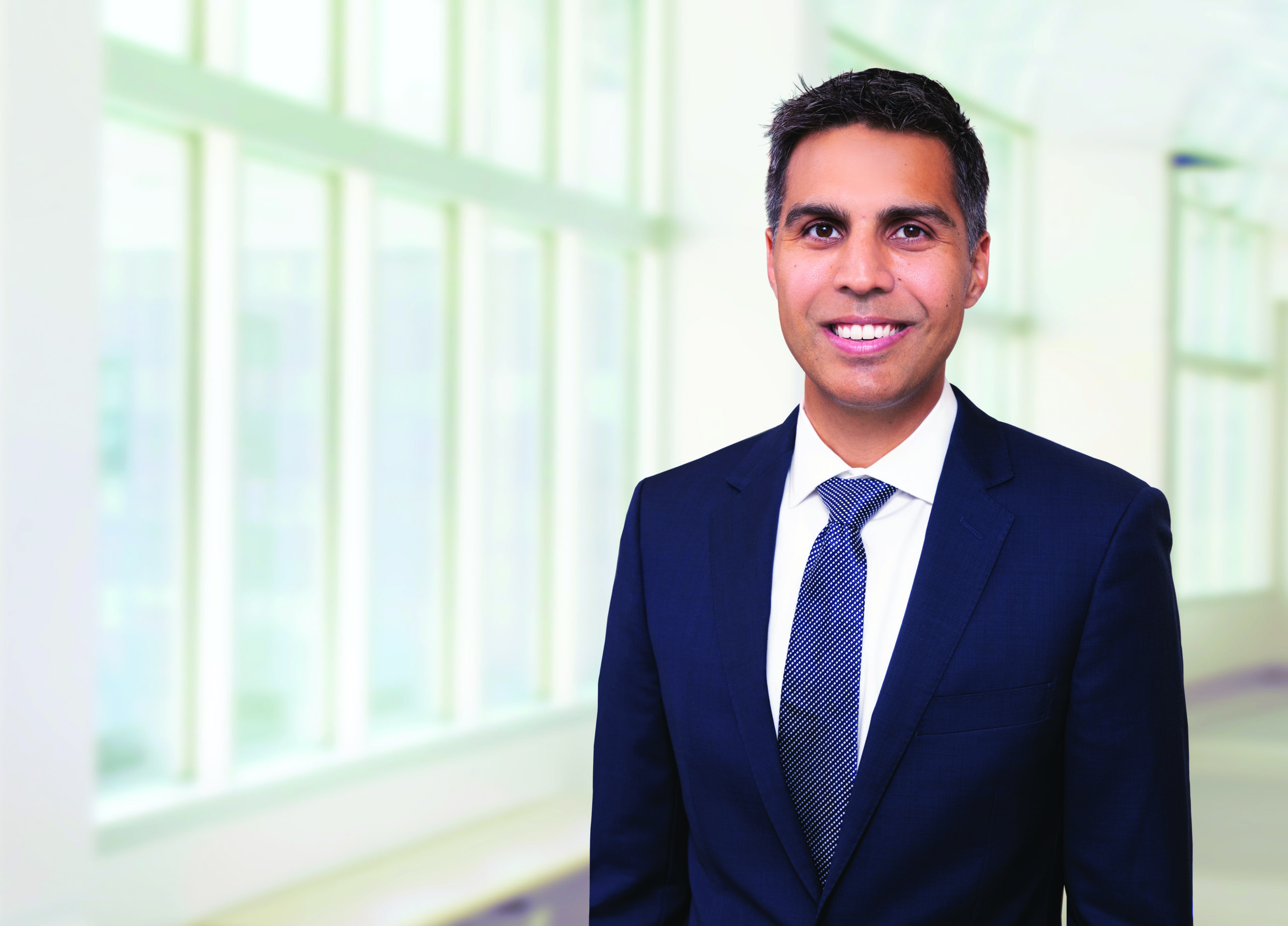Clinical Research for Head and Neck Tumors
SURGEON EVAN WALGAMA’S WORK HELPING HIS PATIENTS MAKE DECISIONS STEERS HIS RESEARCH PURSUITS.
BY PATRICK J. KIGER
When Evan S. Walgama, MD, sees a patient at Saint John’s Cancer Institute, he goes beyond just treating the immediate condition. Part of his mission as a head and neck surgeon is to explore the larger picture surrounding each patient’s treatment: What was the patient’s experience during treatment, and was that individual satisfied with the result?
Dr. Walgama, who recently joined Saint John’s and is also on staff at the Pacific Neuroscience Institute, believes patient decision-making and quality of life are critical metrics in medicine. “I try to let my clinical work inform my research efforts as much as possible and to ask questions that are relevant to my patients or to their outcomes or to the health care system that treats them,”
he says. He has built a tumor registry for patients with head and neck cancer that focuses on cancer outcomes alongside the decision-making process that all patients face. Every patient in his practice is offered the choice to participate through surveys about their quality of life, cancer staging and treatment outcomes. “We’ll put that information together with how the patients feel about their choices as they go through treatment and after it,” Dr. Walgama says. “I think what we learn can help providers and patients in the future make better decisions about the difficult problems that they face. When you know how something has affected patients in the past, you’re able to provide better guidance.” For example, he says, patients who have human papillomavirus-related cancers that affect the tonsils and tongue base often can choose either surgery or nonsurgical treatment using radiation-based therapy.“
For both pathways, the outcomes are generally good, but the problems that patients may face after treatment are different,” he says. “So I’m really trying to go after the third-order question: How do they feel about the decision they made and everything that they went through? Would they have done something differently? We’re interested in what stress the process puts on patients and their families—everything from financial stress to whether they have trouble with their teeth or with swallowing post-treatment.” While head and neck surgery presents physicians with interesting challenges—many tumors of the head and neck involve sensitive areas that can impact hearing, speech, swallowing and other key functions—Dr. Walgama says he chose the specialty because of the potential impact he could have on patients’ lives.“This is a very consequential moment in a patient’s life,” he says. “I’m dealing with patients in that difficult time and trying to be a resource for them, to help them through the process of finding what they perceive to be in their best interest and what I think will give them a good outcome.”
Dr. Walgama is among a large group of Saint John’s physicians who combine research into clinical practice. He has authored more than 30 articles in medical journals, including studies on cost-effectiveness of treatments, health economics, decision analysis and also clinical outcomes.
He is now focused on oncology clinical trials. Offering patients access to clinical trials, which often feature promising new therapies that are not usually available to patients at non-research institutions, is a central goal of the practice, he says. “I’m hoping to build a culture here at Saint John’s in which patients with head and neck tumors are offered the best available trials that might benefit them,”
Dr. Walgama says. “One thing we’re looking at is incorporating immunotherapy clinical trials. Immunotherapy helps activate the patient’s own immune response against the tumor.” He says he has found at Providence Saint John’s Health Center an atmosphere in which both excellence in clinical practice and research are supported. He hopes to secure funding for several critical goals, including establishing a research fellowship for medical students and improving the dissemination of new findings via conferences and virtual meetings.
“Philanthropy makes this research possible and ultimately improves the quality of care,” Dr. Walgama says. “My goal is to offer state-of-the-art head and neck cancer care at Providence hospitals in Southern California. We can be the tide that raises all ships by having a strong head and neck program and by raising awareness and sharing resources.”
